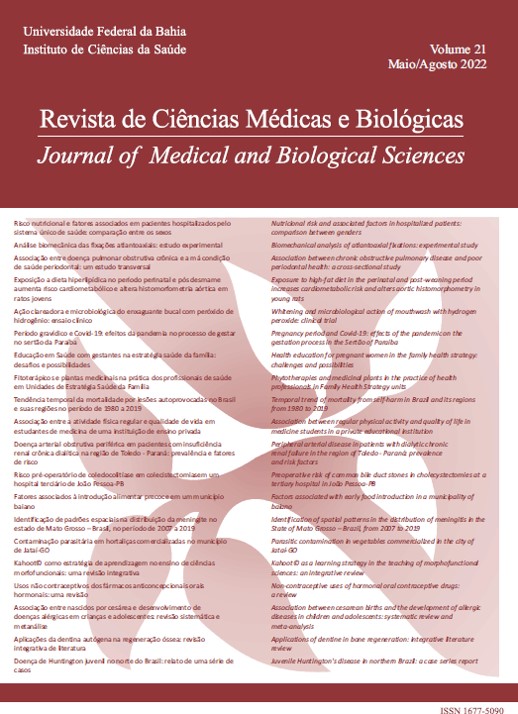Identification of spatial patterns in the distribution of meningitis in the State of Mato Grosso - Brazil, from 2007 to 2019
DOI:
https://doi.org/10.9771/cmbio.v21i2.49679Palavras-chave:
Meningitis. Vulnerabilities. Spatial Analysis. Health Services.Resumo
Objective: to analyze the underreporting of meningitis records in the state of Mato Grosso, under conditions of vulnerability, based on spatial analysis. Methodology: Meningitis cases and estimated population were collected from DataSUS, organized by municipality of residence in the state of Mato Grosso and year of notification. Incidence rates were calculated by dividing the number of cases by the population, multiplying the result by 100,000. For spatial autocorrelation analysis, mean rates were used for the entire period, in addition to the variables percentage of poor, percentage of the population living in households with toilets and running water, and Municipal Human Development Index - Income (MHDI Income), obtained from the Atlas of Human Development in Brazil. Results: in general, inverse autocorrelation was observed for the percentage variable of the population living in households with toilets and running water, with municipalities in the center and southeast of the state under high-high autocorrelation and municipalities in the northwest and northeast under low -low. As for the MHDI Income, cities in the center presented high-high autocorrelation and cities in the south and northwest, low-low. Conclusion: the scenario suggests that there is underreporting of meningitis cases in Mato Grosso, as situations marked by less privileged socioeconomic conditions are risk factors for disease transmission. Improvement of health services is suggested, seeking equitable public policies that aim to reduce the existing inequalities in this country.
Downloads
Downloads
Publicado
Como Citar
Edição
Seção
Licença
Copyright (c) 2022 Revista de Ciências Médicas e Biológicas

Este trabalho está licenciado sob uma licença Creative Commons Attribution 4.0 International License.
A Revista de Ciências Médicas e Biológicas reserva-se todos os direitos autorais dos trabalhos publicados, inclusive de tradução, permitindo, entretanto, a sua posterior reprodução como transcrição, com a devida citação de fonte. O periódico tem acesso livre e gratuito.






